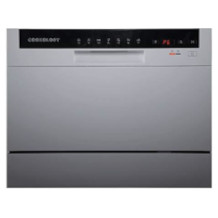Dishwasher purchasing advice: how to choose the right product
- What You Need to Know
- With a dishwasher, consumers save valuable time because the practical kitchen helper does the washing up at the touch of a button.
- Dishwashers are available as free-standing eye-catchers and as built-in or undercounter versions that can be integrated and blend in perfectly with the kitchen.
- Whether singles, couples or large families – there are appliances in the right dimensions for every household, with a width of 45 or 60 centimetres being standard.
- In addition to an extensive range of programmes, useful additional features such as a load sensor, a dosing assistant and a start time preselection increase convenience.
- Modern dishwashers with the energy label A+ and higher are significantly more economical in water and electricity consumption than washing dishes by hand.
Clean dishes in no time with a dishwasher
Hardly anyone feels like washing the dirty dishes in the kitchen for ages right after a sumptuous dinner, when they actually want to make themselves comfortable to digest. Since washing up is one of the least popular household chores, it is not uncommon for pots, pans and the like to pile up in the sink. To spare not only your nerves but also your hands, it is worth buying a dishwasher that makes washing up by hand almost superfluous.
Sink in the course of time
The first electric dishwasher was developed by the Miele company in 1929, at that time still a round tub with legs and motor. But before the appliances bore any resemblance to today’s versions, another 30 years passed. In the meantime, the machines have not only become more affordable, but also more economical and functional.
The dishwasher is now one of the most important technical household helpers. According to the Federal Statistical Office, the dishwasher does the dishes in more than two out of three German households: in 2017, 71.5 per cent of respondents in a survey on the equipment with electronic household appliances owned a dishwasher. Although some efficient appliances are available for as little as 350 euros, energy-efficient models cost at least 500 euros. One price level higher are appliances in energy efficiency class A+++, for which over 1,000 euros are sometimes due.
The pros and cons of a dishwasher
A dishwasher is not only convenient, but also has many other advantages. Since the appliances are now so economical that washing dishes by machine is even cheaper than washing them by hand, users not only save money in the long run, but also protect the environment. In terms of eco-balance, a dishwasher is better than washing dishes by hand. For the same amount of dishes, namely a total of 140 plates, cups, glasses and cutlery, a dishwasher uses only 15 litres of water, whereas washing dishes by hand requires between 40 (about two sinkfuls) and 170 litres, depending on the technique used. This means that a dishwasher, provided it is fully and properly loaded, gets by with at least 25 litres of water less, even compared to the most economical dishwasher.
In addition to electricity and water, consumers save time with a dishwasher. For the usual amount of dishes in the machine, consumers would need about an hour to clean by hand, while putting the dishwasher in and taking it out takes no more than ten minutes in total. Thanks to timer control, it even performs its services when you are not at home.
Since the used dishes usually end up in the dishwasher straight away and don’t pile up in the sink first, the kitchen also looks tidier. In addition, the machine is more hygienic because the high temperatures kill germs and bacteria more effectively. While consumers usually don’t tolerate more than 45 degrees Celsius when washing dishes by hand, the temperatures in the dishwasher are between 60 and 80 degrees Celsius. Another plus point: the rough dishwashing hands do not occur.
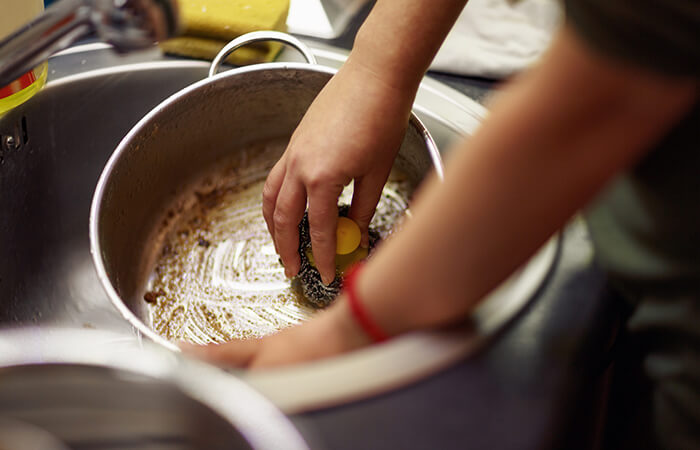
Compared to a sponge, buying a dishwasher is initially a cost-intensive purchase, but the investment pays off in the long run. Unlike washing dishes by hand, not every material is suitable for the machine, as it is subjected to greater stress. These include wood and copper, for example.
Pro Points
- Lower electricity and water costs
- Time saving
- Order in the kitchen
- Particularly hygienic
- Avoiding dishwashing hands
Drawbacks
- High acquisition costs
- Some of the dishes are not dishwasher-safe
Integratable or free-standing? The construction types
Kitchens are as different as their owners. Which dishwasher is best suited to one’s own purposes depends, among other things, on the budget, but also on the space available in the respective rooms. For some consumers, the appearance also plays a role. They should therefore consider in advance whether they value a coherent overall appearance, for example. Although all machines work according to the same principle, a basic distinction is made between three different types: While freestanding dishwashers can be placed flexibly in the room, undercounter and built-in appliances can be integrated under a worktop.
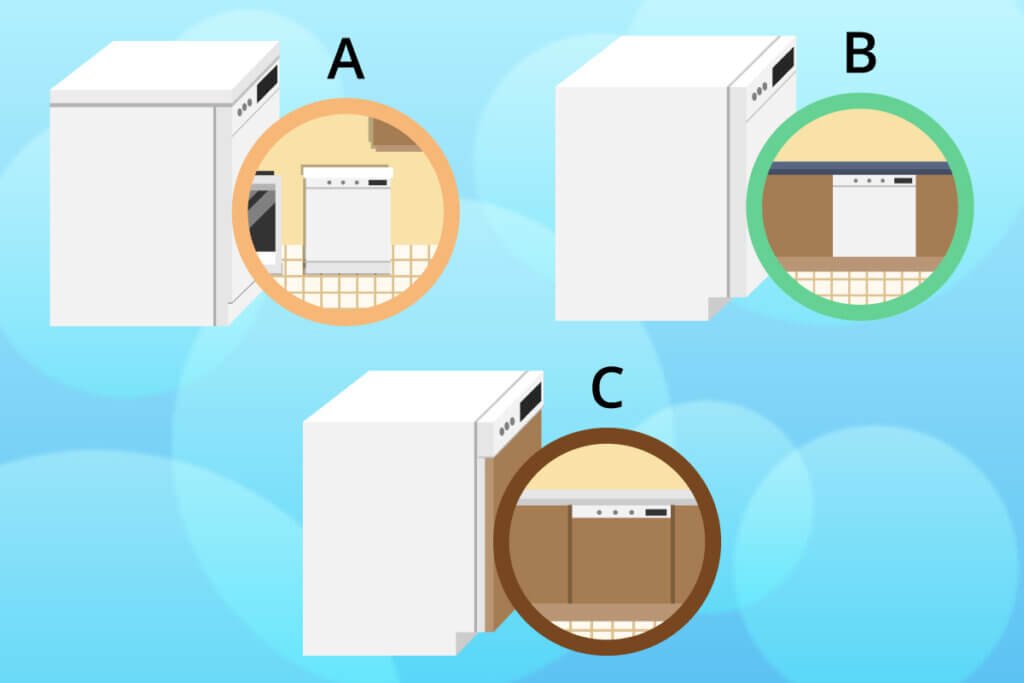
Freestanding dishwashers: For the flexible ones
Freestanding dishwashers are floor-standing appliances that can be placed anywhere as long as electricity and water are available. As a result, they offer the most flexibility when it comes to placement, which is particularly useful for consumers who are moving house. At the same time, they also take up the most space. They are equipped with a shelf at the top, which provides additional space for kitchen accessories. In addition, they are equipped with a front that comes in different colours. Unlike built-in appliances, freestanding dishwashers hardly blend into the overall look of the kitchen, which is why many consumers find them visually unappealing. Freestanding appliances are suitable for all consumers who are not bothered by a dishwasher that is clearly recognisable as such in the overall appearance of their kitchen.
Undercounter dishwasher: For the indecisive
In addition to freestanding dishwashers, undercounter units are also available, which are supplied without a cover plate. Undercounter dishwashers are thus integrated into the kitchen unit, but without attaching a cover to the door that matches the look of the kitchen. Since the front is not in the same style as the rest of the kitchen units but brings its own design, it stands out in the overall look of the interior, unlike the built-in versions. Some models, however, offer an option for attaching a decorative panel that consumers can adapt to the respective kitchen style. Since they are usually not included in the scope of delivery, consumers have to buy them separately. In terms of dimensions, they are designed to be flush with the worktop. Unlike the fully integrated machines, the control panel on the undercounter versions is visible and easily accessible, usually at the top of the front. So if you are undecided whether you want an integrated or a freestanding appliance, an undercounter machine is the best choice.
Built-in dishwasher: For the designers
Whereas a few years ago it was mainly freestanding dishwashers that were found in households, the trend is now towards appliances that can be integrated. This is clear from the market-leading suppliers such as Siemens and Bosch, whose range consists mainly of built-in machines. One reason for this is that most modern rented flats already have fully equipped kitchenettes. Integratable dishwashers can be adapted to the rest of the kitchen design so that they blend harmoniously into the overall picture. A distinction is made between fully integratable and partially integratable versions:
Fully integrable

Fully integrable dishwashers also have a front in the style of the kitchen unit. Since the control panel is located on the top and only becomes visible when the door is opened, fully integrable dishwashers blend most inconspicuously into the kitchen design.
Partially integrable
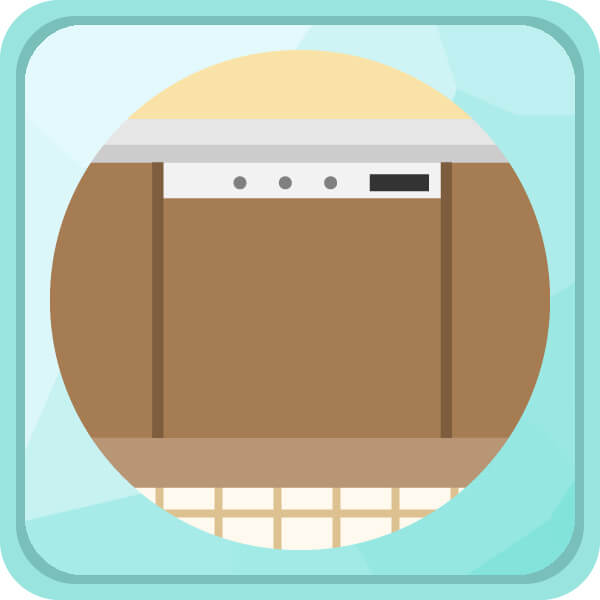
For dishwashers that can be partially integrated, the original furniture fronts can be fitted on the front. Only the operating elements and the display are left out and still visible. The rest of the appliance front looks like the adjacent kitchen cabinets. Since semi-integratable dishwashers are built directly into the worktop, manufacturers do not use a cover plate on the top.
From single households to large families – the dimensions
The decision for the right size is based on the one hand on the space in the kitchen and on the other hand on the number of people living in the household. In the meantime, two standard sizes in particular have become established. Single flats in particular, however, often cannot find space for a large dishwasher. That is why there are more compact appliances for small spaces, for example.
45 and 60 centimetres: The standard dimensions
In terms of height, dishwashers vary between 81 and 92 centimetres. However, as they usually have height-adjustable feet, they can be adjusted to the height of the respective worktop. With the help of the variable height, users can adjust the appliance to their height, if necessary, to make loading and unloading easier. In addition, height-adjustable feet can compensate for unevenness in the floor.
The standard width for dishwashers is 60 centimetres. Dishwashers with this dimension can hold 12 to 14 place settings and are particularly suitable for larger households, for example families with two children. Narrow dishwashers with a width of 45 centimetres, on the other hand, are ideal for singles or couples. They usually take between six and ten place settings. The following table summarises the standard dimensions of dishwashers and their suitability for different household sizes:
| Wide | Capacity | Household size |
| 45 centimetre | 6 to 10 place settings | 1 – 2 persons |
| 60 centimetre | 11 to 14 place settings | 3 to 5 persons |
When choosing, the load of the appliance is the most important factor: if you cook every day, you are better off with a larger machine, even if you are the only user, because a small appliance that is quickly used to capacity and therefore runs twice a day will ultimately consume more energy.
Counted off: What’s in a place settings?
A place setting is a standardised number of cutlery and crockery items used to indicate the capacity of different dishwashers. It consists of a dinner plate, soup plate and dessert plate, a saucer, cup and drinking glass, as well as a knife, fork, soup spoon, teaspoon and dessert spoon. The following classification indicates the usual space requirements for different household sizes:
- 1 person: 4 to 6 place settings
- 2 persons: 8 to 10 place settings
- 3 persons: 12+ place settings
Large-capacity and tabletop dishwashers: The special shapes
In addition to the standard sizes, there are also dishwashers in special shapes on the market. For particularly large households or catering establishments, for example, there are large-capacity dishwashers, while compact tabletop dishwashers are available for single households with limited space.
Large-capacity dishwasher

Since the height of the worktops is often over 100 centimetres these days, but standard dishwashers are lower at 81 to 85 centimetres, they would not make full use of the space. The solution is a so-called large-capacity dishwasher, also known as an XXL dishwasher, with a height of 86 to 92 centimetres. Oversized machines are particularly worthwhile if pots and pans are used frequently; they fit easily into the lower basket. Large-capacity dishwashers are also recommended for restaurants and large households.
Table dishwasher

With their compact size of about 50 by 55 by 45 centimetres, tabletop dishwashers take up hardly any space in the kitchen and are perfect for single flats where there is little washing up to do. Thanks to their low weight of around 20 kilograms, users can place them on a worktop or table and use them flexibly for camping, at parties or in a holiday home. Although their electricity and water requirements are lower than those of a larger alternative, their energy efficiency is relatively poorer. They are also comparatively expensive.
Interior design, wealth of functions and programme selection
Depending on the manufacturer, a dishwasher is equipped with several features that make everyday life easier. However, a greater wealth of functions is usually accompanied by a higher price. Therefore, before buying, consumers should carefully consider which features are appropriate for their needs.
It’s the inner values that count
The basic layout is similar for all dishwashers. Inside, there are two baskets that can be pulled out like a drawer. The slightly larger lower basket is responsible for the heavy dishes, i.e. it offers storage space for dinner plates, soup plates, pots and other larger containers. A cutlery basket can also be fitted as standard. The upper basket, on the other hand, is suitable for lighter items such as cups, glasses and small plates. In some models, the upper basket is adjustable in height or can be angled to accommodate larger items. Some models have a cutlery drawer above the upper basket instead of a cutlery basket in the lower basket. The use of a cutlery drawer creates additional space in the lower basket for large pots or bowls.
Both baskets are fitted with rows of spikes to hold plates and saucers. Since they can be folded down, however, they also allow space-saving storage of bulky pots and pans. Fixed plate holders, on the other hand, have the advantage that they do not slip. Height-adjustable glass holders are also available for the stable placement of wine, champagne and cocktail glasses. To simplify the washing of special household items, the following special baskets and devices for dishwashers are also used:
- Special baskets for baby bottles and other drinking bottles
- Fold-away cup rests
- Supports for barbecue cutlery and other large cutlery items
- Clamping devices, for example for long stemmed glasses
Load sensor, dosing assistant and co.: Useful features
Some dishwashers have a large number of useful features. However, which extras are necessary always depends on one’s own needs. The most common features include the following:
The load sensor

If there are too many dishes in the dishwasher, more water is needed so that the water level drops more quickly. In this case, new water must be added immediately. A load sensor detects the water level or the load quantity and ensures optimal consumption by regulating the washing time even when the machine is half full. By saving electricity and water, a dishwasher with a load sensor works more efficiently.
The Aqua Sensor

The Aqua sensor uses a light beam to control the rinse water. Depending on the degree of soiling or turbidity, it adjusts the water consumption and the number of rinse cycles and regulates the temperature. This saves users energy costs.
The dosing assistant

A dosing assistant optimises the efficiency of the rinsing tabs by ensuring targeted dissolution and even distribution of the detergent. The tabs no longer fall uncontrollably into the interior, but into a small collection tray on the upper basket.
The rinsing zones

By defining different wash zones, a dishwasher can individually adjust the need for water, cleaning time and so on. To clean dishes with different levels of soiling at once, a model with wash zones increases the water pressure only in the areas that require more intensive cleaning.
The start time preselection

With this additional function, users can set the start of the wash cycle so that they can run the machine even when they are not present. For example, if they set it to run at night, they not only benefit from a cheaper electricity tariff, but also have clean dishes ready the next morning.
The Zeolite Drying System

The zeolite drying system requires no electrical energy. The small mineral beads are integrated in a stainless steel sieve in the bottom of the appliance and absorb the moisture. They heat up at the same time and thus increase the temperature in the interior. The water then remains stored in the zeolites and is released again during the next rinse cycle. Consumers thus save water and electricity. However, the technology is somewhat more expensive and so far can only be found in Siemens, Bosch and Neff machines.
Safety first: The AquaStop systems
All it takes is a burst hose or a defective valve to cause water damage in the home. Since a defect can occur even in the highest-quality dishwashers, various safety precautions are anchored in modern appliances. In Siemens and Bosch appliances, for example, these are commonly known as AquaStop systems, in Beko machines as WaterSafe, but their effect is always the same: they automatically shut off the water supply at the tap by means of a shut-off valve as soon as the hose leaks.
There are two different systems on the market for this:
The Waterproof System

This further development of the Watercontrol system also has a double solenoid valve and additional drain hoses for added safety. This means that the water supply is stopped even if one of the two valves or hoses is defective.
The Watercontrol System

Dishwashers with a control system are additionally equipped with sensors for the water level and a bottom tray. The valve closes automatically as soon as the required amount of water has flowed in. There is a float switch in the floor pan that also controls the water supply. Thanks to this function, there is no spilling.
The right programme selection
There is usually a control panel and display on the front of the dishwasher where users can select programmes or additional functions. The display shows, among other things, the remaining time and the control panel symbolises with a lamp which programme is currently selected. If you have particularly temperature-sensitive dishes, you should make sure that the dishwasher offers as many washing programmes as possible for different applications and degrees of soiling. In addition to the standard applications such as the quick programme or the eco programme, some models have a wide variety of programmes. These include, for example, intensive programmes for heavily soiled dishes or applications for different types of dishes, such as high-quality glasses.
Modern appliances now have up to twelve programmes, allowing them to achieve an optimal level of cleaning with the lowest possible energy consumption. If you familiarise yourself a little with the various applications, you will ultimately not only be doing something for the environment, but also for your wallet. A dishwasher’s standard range of programmes should include the following:
Standard programme: The standard programme is intended for universal use and above all for less soiling. To save operating costs, it works with relatively low temperatures (45 to 55 degrees Celsius) and little water.
Automatic programme: The intelligent programme decides for itself which amount of water and detergent is suitable depending on the load capacity and the degree of soiling. So-called turbidity sensors and a load detection system are used for this.
Eco programme: The energy-saving programme is characterised by particularly low electricity and water consumption, but requires more time. It runs at slightly lower temperatures between 45 and 55 degrees Celsius, which is why it is suitable for normally soiled dishes.
Gentle programme: The gentle programme is ideal for delicate or very precious dishes, such as glasses. As it works with temperatures of less than 45 degrees and a lower water pressure, it can only cope with light soiling.
Quick programme: If, for example, you use dishes at lunchtime that you will need again in the evening, use a quick programme that usually only takes between 15 and 30 minutes for a wash cycle. However, plates and the like must not be heavily soiled, as the fast programme may not remove all the impurities in the short time.
Intensive programme: The intensive or hygiene programme is intended for heavily soiled dishes that have dried out, for example, or baby dishes where all germs and pathogens need to be killed. It not only uses particularly high temperatures of up to 85 degrees Celsius, but also uses new water in every rinse phase and even allows five minutes for rinsing.
Night rinse programme: If you want to take advantage of cheap night-time electricity without being deprived of sleep by the rumbling operating noises of the dishwasher, use this special rinse application, which can be pre-programmed for quiet use overnight. The operating volume is below 40 decibels, which is comparable to a whisper.
Here are the most important programmes at a glance:
| Programme | Duration | Temperature | Pollution |
| Quick programme | 15 – 30 minutes | 45 to 55 degrees Celsius | easy |
| Eco programme | up to 3 hours | 45 to 55 degrees Celsius | normal |
| Normal programme | 1 – 2 hours | 60 to 65 degrees Celsius | normal |
| Intensive programme | 1 – 2 hours | 65 to 85 degrees Celsius | strongly |
For efficient consumption – The energy label
Since buying a dishwasher is a long-term purchase for the next few years, the operation should consume as little water and energy as possible. On average, a dishwasher survives 2,000 wash cycles, which is roughly equivalent to 12 years. However, with proper use and care, some models even last up to 20 years.
A simple overview of the efficiency of a machine is provided by the energy label (the EU energy consumption label), which can now be found on every electrical appliance. Among other things, consumers can find the energy efficiency class on this label. The energy efficiency class is a value between A+++ (the best value) and G (the worst value), which indicates how energy-efficient the appliance is. Nowadays, however, there is hardly a model that is rated worse than class A.
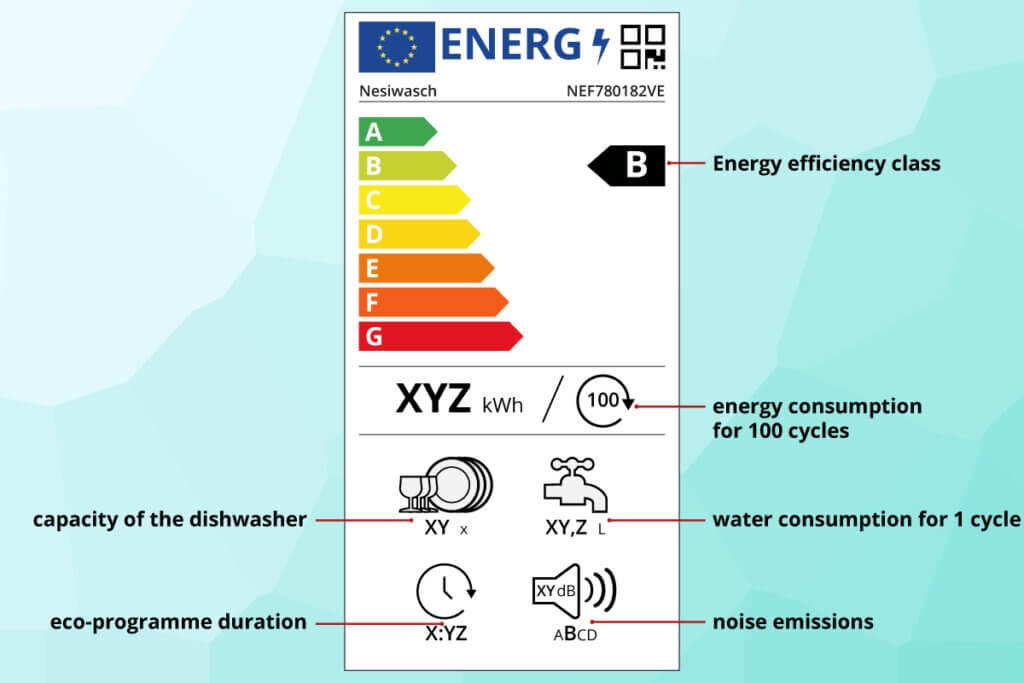
The power consumption
The values on the label refer to the so-called economy programme, which usually means the particularly efficient eco programme. Both electricity and water consumption are calculated on the basis of 280 wash cycles per year, which corresponds to about five to six loads per week. If it is an A+++ appliance, users pay an average of about 70 euros a year for electricity and water. Broken down to the individual programmes, this means that at an electricity price of 24 cents per kilowatt hour for a wash cycle
- in the short programme at 40 degrees Celsius 22 cents,
- in the standard programme at 50 degrees Celsius 25 cents and
- in the intensive programme at 70 degrees Celsius 46 cents.
In comparison: a dishwasher in efficiency class A+ with an electricity consumption of 290 kilowatt hours (81 euros) and a water consumption of 3,220 litres (13 euros) costs consumers 94 euros a year, or about 1,128 euros over 12 years, while an appliance in class A+++ with an average electricity consumption of 194 kilowatt hours (54 euros) and a water consumption of 2,800 litres (11 euros) costs only 65 euros a year, or only 780 euros over the same period. With an A+++ machine, you save 348 euros in 12 years compared to an A+ appliance.
The water consumption
While the energy consumption of the various models and manufacturers has converged in recent years, there are still major differences in water consumption. Some machines manage with just 6.5 litres per wash cycle, whereas other dishwashers require up to 18 litres. With an average price of 3.85 euros per cubic metre, users save up to nine euros a year if they opt for the machine with the lowest water consumption.
As a general rule, models that consume more than 16 litres per wash cycle should be avoided. In addition, water consumption varies depending on the programme, because the standard programme, for example, requires less water than the intensive programme.
The drying efficiency
The drying efficiency indicates the degree of drying that the dishes have 30 minutes after the end of the programme. Just like energy efficiency, drying efficiency is categorised from A to G, with A being the best and G being the worst. Most new appliances have a drying efficiency class of A, which is why this is now considered the standard. In addition to the washing programme, the drying efficiency also depends on the type of dishes. For example, some short programmes do without drying. In addition, plastic dries more slowly than glass or porcelain.
The noise emission
Particularly in open kitchens or living rooms, it is important that the dishwasher is not too loud during operation. The volume should preferably be below 50 decibels, but most modern dishwashers meet this guideline and are hardly louder than 40 decibels. For comparison: 40 decibels is roughly on a par with a whisper, 50 decibels with the usual volume in the office or a quiet conversation. The noise emission of a dishwasher is also influenced by many different factors, be it the surface or the items being washed. Often, the wrong load is the cause of annoying noises because something is blocking or bumping against each other.
The cleaner trio – tabs, salt and rinse aid
When asked what all belongs in the dishwasher, the first thing that comes to mind for most consumers is tabs. However, in addition to the classic tablet form, dishwashing detergent is also available as powder and gel pads. For optimal cleaning results, the use of rinse aid and salt is also recommended. But what is the best composition?
Tabs, powder or liquid cleaner?
In order to deliver a convincing cleaning result, apart from water, a dishwasher also needs a cleaner, which consumers can choose from in various forms. The cleaners are mainly there to treat the impurities of the dishes so that the water can come off. Depending on the composition, some cleaners also have a descaling or particularly gentle effect.
Tabs

Tabs are optimised for one rinse cycle, i.e. one is always used per cycle. A distinction is made between mono-tabs with a single active ingredient and multi-tabs, which not only provide cleaning but also rinse and dry shine. One disadvantage is the possibility that the tabs do not dissolve properly, making cleaning ineffective and leaving tab residues all over the dishwasher. In addition, due to the high dosage of the tabs, more chemicals end up in the waste water, which in turn results in a higher need for sewage treatment or a higher environmental impact.
Liquid cleaner

Liquid detergents come either in bottles or as gel pads. The advantage of the latter over tabs is above all their more environmentally friendly water-soluble packaging. Another advantage is their clean handling. However, since the bleach that is usually contained in tabs and powders is missing, the cleaning power is limited.
Powder

Since users can adjust the powder cleaner to the respective programme duration and degree of soiling, these are more economical in consumption than the non-portionable tabs. However, overdosing may cause damage to the dishes, which is why users should always follow the dosage instructions and use a measuring cup. As with the tabs, the powder is also available in a multi variant.
Optimally softened: dishwasher salt
To soften the tap water, consumers need a special regenerating salt in addition to the washing-up liquid, so that no limescale builds up on the dishes, in the pipes or on the heating elements. The salt is filled into the storage container, and the correct amount is indicated by the refill indicator on the control panel. However, users must calibrate it beforehand by asking about the local water hardness. Most dishwashers warn their owners that they need to refill the tank every few weeks by means of an audible signal or a display. In addition, many modern dishwashers are now able to determine the hardness of the water and dose the salt accordingly.
To avoid water spots: rinse aid
Together with the tab and the softener salt, the rinse aid ensures an optimal washing result by covering the dishes like a film so that the water drains off completely and leaves no stains. In this way, the liquid also helps to improve the drying of the dishes. As with salt, there is also a refill indicator for the rinse aid, which gives a signal as soon as there is a need for replenishment. However, if you use a detergent that includes rinse aid, you can dispense with this additive and switch off the indicator. As a rule, the dishwasher doses the rinse aid automatically. If too much rinse aid is used, streaks may remain on the dishes, while underdosing will leave limescale stains on the dishes.
Connecting the dishwasher and loading it optimally – This is how it works
Connecting the dishwasher is a challenge for many consumers: every manufacturer and every model differs in the procedure. However, if you follow the tips below, you will have completed the tedious task in just a few steps:
- Position the dishwasher so that it can be connected directly to the water connection or drain and the socket, e.g. at the siphon of the sink. Never use an extension cable, as the risk of a short circuit is too high in the event of water damage.
- Turn off both the power and the water supply and make sure there is a valve at the sink that can be connected to the dishwasher’s water supply hose. Upgrade if necessary.
- Connect the dishwasher’s waste water connection, often by simply plugging it in, and fix the hose firmly to the tap’s pipe with a clamp. It is advisable to have a bucket ready in case residual water runs out.
- Restore the power supply, test all connections and turn the water inlet back on.
- Start a test run. If water leaks out, switch the unit off again and tighten the connections.
The right and wrong of loading
Is the cutlery aligned downwards or upwards? Where do the plates go and where the glasses? It seems as if everyone has worked out their own routine for putting away the dishwasher. But with the right technique you can save a lot of space. The lower basket, for example, is for larger cooking utensils such as pots and pans, but also plates and chopping boards. The upper basket is for glasses, larger ladles and delicate dishes. To prevent the dishes from running full of water during the wash cycle, they should be placed with the opening facing downwards. The cutlery should always be placed with the handle facing downwards, which increases the cleaning effect. To ensure that the water reaches everywhere and the spray arms remain movable, do not load the baskets too full.
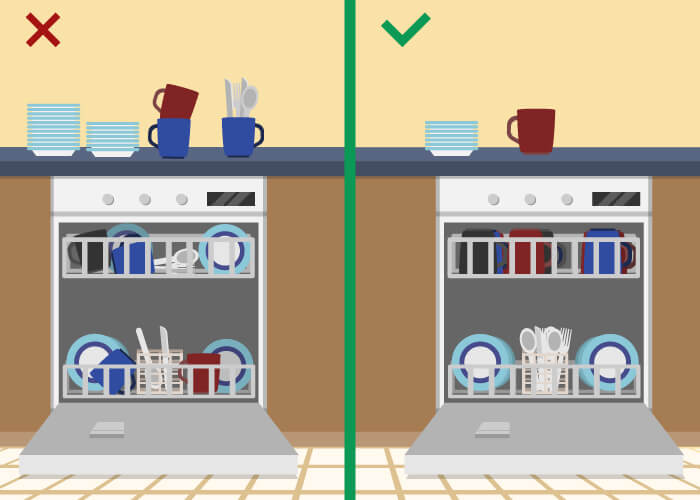
Try the following tips to become a loading pro:
Stow the larger items first and then put away the smaller and smaller utensils to fill all the gaps with plates, glasses and cups.
If you sort the dishes already in the machine, you can remove and put away matching plates, glasses and other dishes all the more quickly after cleaning, without having to search for them in the washing basket.
Scrape stubborn food residues off plates and co. in advance with a blunt object so that they get really clean without having to use water to rinse them first.
Always clear out the machine from the bottom to the top, as residual water that has not dried away, which can sometimes remain on the undersides of cups, for example, could drip from the top onto the dry dishes in the lower area.
A little material science: What can be put in the dishwasher?
Not every kitchen utensil is suitable for the dishwasher. However, as long as the cutlery, pots and pans are made of stainless steel, they are rustproof and dishwasher safe. Silver cutlery and ceramic plates may also be cleaned in the machine. Porcelain with decoration should, however, be marked as dishwasher-safe so that the colour intensity does not fade. Apart from particularly delicate or decorated versions, glasses are also generally suitable for the dishwasher.
Attention, danger of confusion!
To know whether a kitchen utensil is suitable for cleaning in the dishwasher, it is usually labelled with a pictogram or the term “dishwasher-safe”. However, neither of these is bindingly defined, so there are several different variants. It should also not be confused with the glass and fork symbol, which identifies products that are suitable for contact with food.
Caution should be exercised, however, with the following materials:
- Wood: Cutting boards, cooking spoons and the like change their material structure under the high temperatures, fade and splinter.
- Metal: Aluminium, tin, copper and brass do not belong in the dishwasher as they could become dull and tarnish black.
- Crystal: The high temperatures not only increase the risk of breakage, the glass also loses its shine in the long run.
- Plastic: Some plastics may discolour or deform over time if they are too close to the heating rods.
It also makes more sense to do the dishes yourself:
- Old crockery: Plates with gold rims and other decorations should be handled with particular care, as the decorations can peel off.
- Cheese grater: The numerous small perforations and sharp blades can hardly be cleaned completely in the dishwasher, so residues always remain.
- High-quality chef’s knives: Expensive damask knives would quickly become dull in the dishwasher.
- Pet bowls: To prevent bacteria from pets’ mouths from landing on all the other dishes, pet bowls should not be washed in the dishwasher.

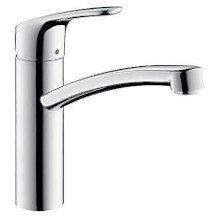
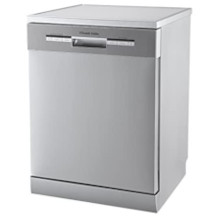
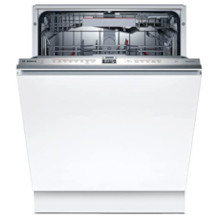
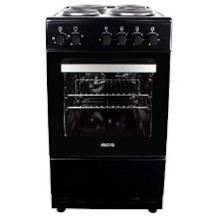
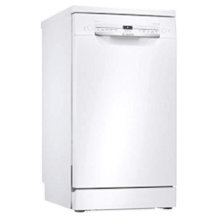
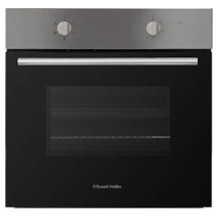
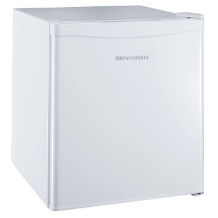
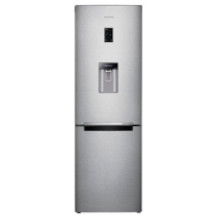
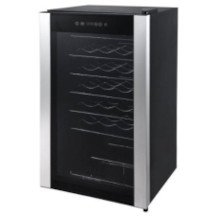
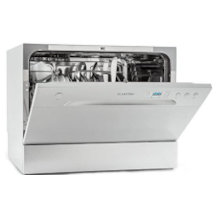


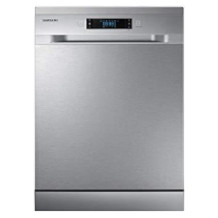


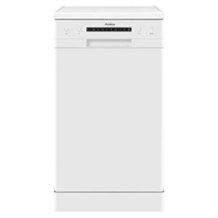
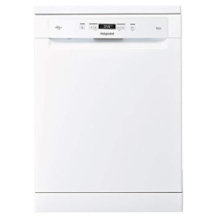


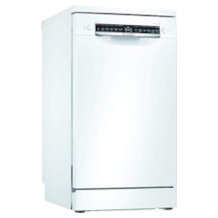



 143 reviews
143 reviews
